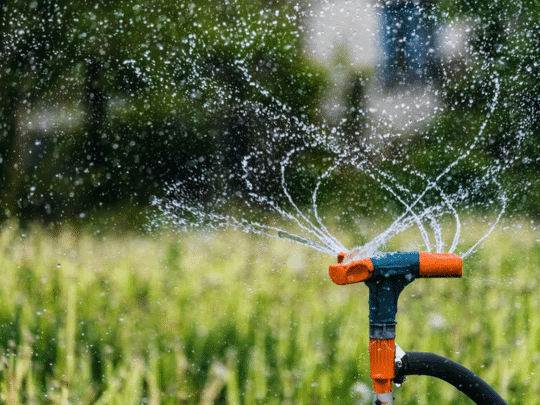

Showers trickling, dishwasher taking ages, sprinklers barely misting when Greer water line pressure drops across your whole home, comfort and convenience suffer fast. This Greer-focused guide explains the most common causes of house-wide low water pressure, simple checks you can do in minutes, and when it’s smart to call KT Plumbing for a lasting fix. We’ll also cover typical remedies so you know what to expect before anyone grabs a wrench.
If neighbors report the same thing or you see utility crews on your street, the problem may be upstream. Temporary low pressure during CPW work is normal. Once the utility restores service, pressure should rebound without a house call.
After a repair or DIY project, a valve left half-open can choke flow to the entire home. Check the main shutoff inside and the valve at the meter box. Fully open, the handle should be in line with the pipe (for ball valves) or turned all the way counterclockwise (for gate valves).
Homes with high street pressure use a PRV to tame it. When PRVs wear out, they can drift low, surge high, or fluctuate—making showers and appliances unreliable. Testing and adjustment are quick; replacement is often the cure for unstable whole-home pressure.
Sediment and carbon cartridges load up over time and act like a bottleneck. If pressure improves when you switch the filter to bypass, you’ve found your culprit. Right-sizing the filter and changing cartridges on schedule keeps flow steady.
A stuck bypass, fouled media, or control-valve issues can throttle the entire home. Verify the unit isn’t in regeneration, confirm the bypass position, and check for error codes. Service restores flow—and protects fixtures from scale.
A leak between the meter and your house—or in walls/slab—bleeds pressure and wastes water. Signs include meter movement with all fixtures off, soggy spots in the yard, or warm areas on floors. Prompt leak detection and repair stop the pressure loss and the water bill spike.
Older galvanized lines slowly choke with mineral buildup, shrinking the pipe’s effective diameter. The result: decent pressure at one fixture, poor flow at several. The long-term fix is repiping (often to PEX or copper), which restores both pressure and water quality.
Some older homes still rely on undersized ½-inch services or have constrictions from kinks and fittings. Upsizing the service line—or replacing it with a trenchless pull where possible—can transform whole-home flow, especially during peak use.
On private wells, a failing pump, waterlogged pressure tank, or mis-set pressure switch leads to low, pulsing, or inconsistent pressure. Testing cut-in/cut-out settings and tank charge (psi) points the way to repair or replacement.
A PRV adjustment or replacement restores stable pressure when street pressure is high. Filter/softener service clears bottlenecks. Leak repairs range from spot fixes to new service runs. Repiping solves chronic galvanized choke points. If street or well pressure is consistently low even after fixes, a booster pump with a small tank can maintain 45–60 psi for showers and appliances. We’ll recommend the least invasive, highest-value option after testing.
First, we perform a same-day pressure and flow test and a whole-home valve/fixture audit. If a PRV is the culprit, we test, adjust, or replace it on the spot. If filtration or softening equipment is restricting flow, we service or reconfigure it. Suspect a leak? We provide non-destructive leak detection and repair in Greer. For aging pipes or undersized services, we design a repipe or trenchless service upgrade and handle permits and CPW coordination. You get clear pricing, tidy workmanship, and strong warranties.
Don’t live with weak showers and slow-filling appliances. KT Plumbing restores reliable pressure for Greer homeowners with fast testing, clear options, and code-compliant repairs. Call today to schedule your pressure and flow diagnostic and get your home running right again.
Book an appointment online today to get a skilled plumber to fix your problem!
Book Online Book Online